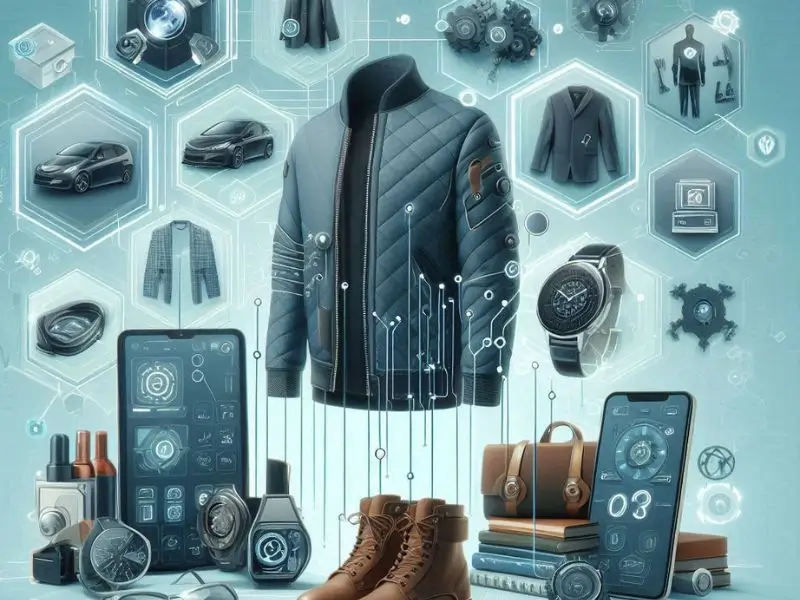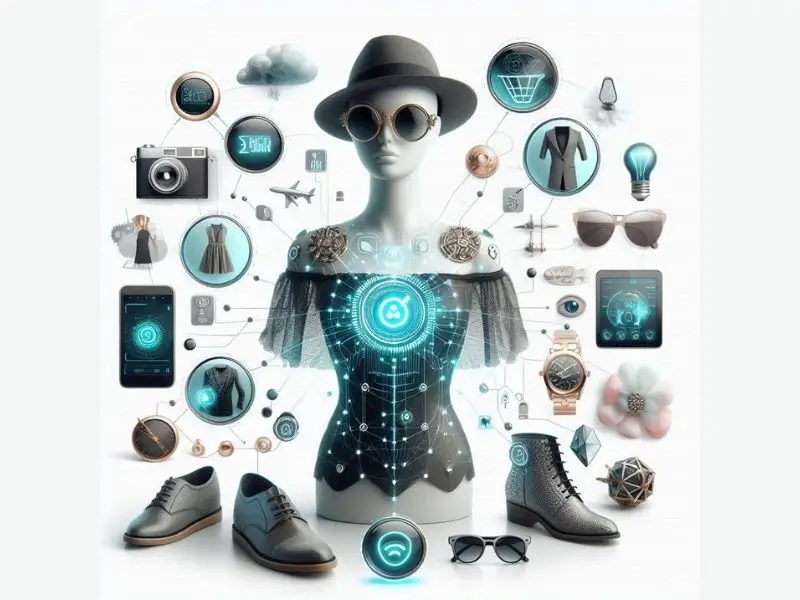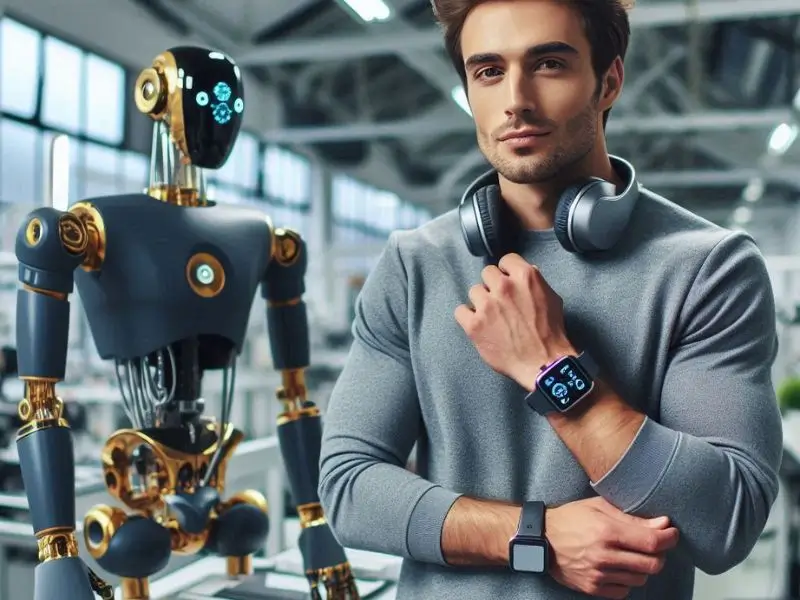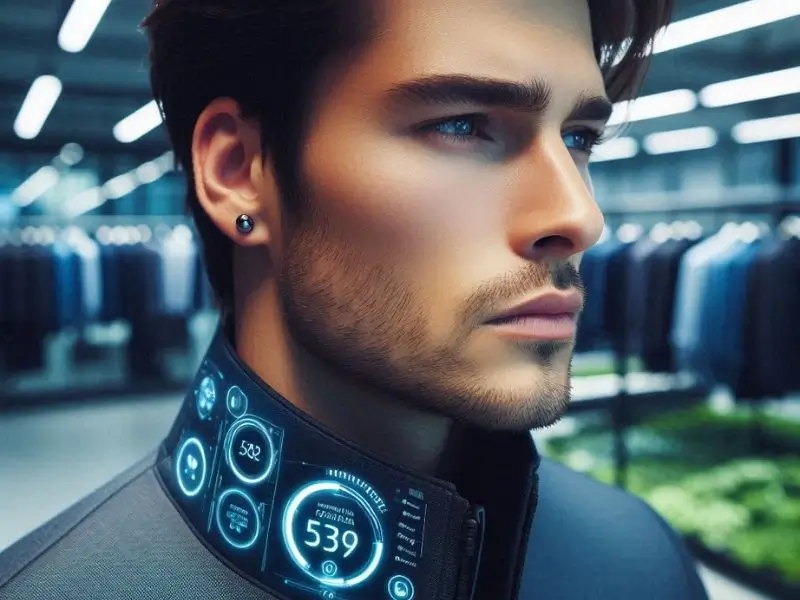Once a realm of pure aesthetics and fleeting trends, the fashion industry is undergoing a metamorphosis. No longer just about the cut of a dress or the drape of a jacket, fashion is embracing the power of technology to create a whole new experience for consumers.
This intersection of wearable technology and fashion has fostered innovation, personalization, and a new level of functionality in clothing and accessories.
We have cataloged the top 5 ways wearable technology has changed the fashion industry.
Table of Contents
Top 5 Ways Wearable Technology is Changing the Fashion Industry

1. From Fitness Trackers to Fashion Statements: The Rise of Smart Apparel
Gone are the days of bulky fitness trackers strapped to your wrist like a utilitarian afterthought. Today, wearable technology seamlessly integrates into clothing, transforming everyday garments into intelligent companions.
Smart fabrics embedded with sensors can track a wearer’s heart rate, activity levels, and even sleep patterns. Imagine a yoga top that monitors your breathing and posture, or a running jacket that adjusts its temperature based on the environment. These innovations cater to the growing desire for health-conscious clothing that empowers wearers to take charge of their well-being.
The realm of smart clothing extends far beyond athletic wear. Imagine a dress that subtly changes color based on your mood, or a suit jacket that monitors your stress levels and sends you calming notifications. The possibilities for integrating functionality into everyday fashion are endless.
2. Virtual Try-On and Personalized Shopping

The traditional shopping experience, fraught with endless dressing rooms and size uncertainties, is being disrupted by virtual try-on technology powered by wearable tech.
Augmented reality (AR) allows customers to virtually “wear” clothes through their smartphones or tablets, providing a realistic and convenient way to try on different styles and sizes.
This technology not only streamlines the shopping experience but also offers valuable data to retailers. By analyzing virtual try-on behavior, brands can gain insights into customer preferences and optimize their inventory management.
Furthermore, wearable tech can personalize the shopping experience. Imagine a smartwatch that suggests clothing items based on your past purchases, weather conditions, or even your mood!
The future of retail is hyper-personalized, and wearable technology is at the forefront of this revolution.
3. Wearable Tech for Eco-Conscious Fashion
The fashion industry has a significant environmental footprint. However, wearable technology offers solutions to promote sustainability within the fashion ecosystem. Smart garments can be designed with biodegradable materials that decompose naturally, reducing waste.
Additionally, clothing embedded with sensors can monitor their environmental impact, providing valuable data for optimizing production processes and minimizing resource consumption.
Another exciting development is the use of biomimicry in wearable tech fashion. Companies are developing fabrics inspired by nature, such as spider silk, which is incredibly strong and lightweight.
4. Beyond Aesthetics, You Got Wearable Tech for Safety and Security!
Wearable technology has the potential to enhance personal safety and security in the fashion industry. Clothing embedded with GPS trackers can provide peace of mind for parents wanting to keep tabs on their children’s whereabouts. Additionally, jackets equipped with fall detection sensors could automatically send emergency alerts in case of an accident.
Furthermore, wearable tech can deter theft. Clothing with embedded RFID chips can be easily tracked, making it more difficult for criminals to steal valuable garments.
These advancements not only enhance security but also offer a sense of confidence and peace of mind for fashion enthusiasts.
5. Wearable Tech Now Offers a Multidimensional Fashion Experience

Fashion isn’t just about what we see; it’s about how we feel and interact with the world around us. Wearable technology is opening doors to a more immersive and sensory fashion experience. Imagine a dress that responds to music by changing color or texture, or a jacket that adjusts its temperature based on your emotional state.
These advancements blur the lines between fashion and technology, creating a truly multidimensional experience. The future of fashion could involve garments that interact with our senses, creating a unique and personalized experience for each wearer.
But is this the end of all the ways wearable technology is changing the fashion industry? Of course not. Just the Start!
How Will Wearable Technology Change the Fashion Industry in the Future?

While the intersection of wearable technology and fashion is still in its nascent stages, the innovation potential is boundless. Here’s a glimpse into what the future might hold.
- AI-Powered Design and Customization: Imagine AI algorithms that analyze fashion trends, customer preferences, and even weather patterns to create personalized clothing designs. Customers could co-create their garments with AI, selecting features and functionalities to suit their individual needs and styles.
- Interactive Fashion Experiences: Wearable tech could create interactive fashion experiences that go beyond the physical garment. Imagine clothing that reacts to social media interactions or music, allowing for a more expressive and dynamic fashion experience.
- Health Monitoring and Optimization: Wearable tech clothing could become even more sophisticated in monitoring and optimizing our health. Imagine garments that not only track vital signs but also provide real-time feedback and even deliver targeted therapies for specific health concerns.
- The Rise of Neuro-Aesthetics: The integration of brain-computer interfaces (BCIs) could push the boundaries of fashion even further. Imagine clothing that responds to our emotions, tailoring its appearance or functionality to create a calming or energizing effect.
- The Merging of Physical and Digital Fashion: The line between physical and digital fashion could become increasingly blurred. Imagine garments that exist both as physical pieces and digital NFTs, offering a unique blend of ownership and virtual expression.
These are just a few possibilities that lie on the horizon. As wearable technology continues to evolve, the fashion industry will undoubtedly embrace these advancements to create a future where clothing is not just about aesthetics, but a dynamic and interactive extension of ourselves.
The Future of Fashion and Wearable Technology is Bound to Change for the Good!
The integration of wearable technology into fashion is not just a passing trend; it’s a revolution in the making. From personalized shopping experiences to health-conscious clothing and interactive garments, wearable tech is transforming the way we design, purchase, and experience fashion.
As we move forward, it’s crucial to address the ethical concerns surrounding data privacy and accessibility to ensure this technological leap benefits everyone. The future of fashion is bright, woven with threads of innovation and functionality, promising a world where style meets substance in a seamless and ever-evolving way.
Loving the content at Tech Trend Tomorrow? Why not share it with your friends?
FAQs: Wearable Technology and the Fashion Industry
What’s wearable tech in fashion?
Think smart clothes (track health!), smartwatches, virtual try-on tech, and interactive garments.
Why is wearable tech in fashion a good thing?
It offers personalized shopping, health tracking, safety features, sustainable practices, and more interactive fashion experiences.
What’s the future of wearable tech fashion?
AI design, interactive clothes, advanced health tracking, garments that respond to emotions, and a merging of physical and digital fashion.

